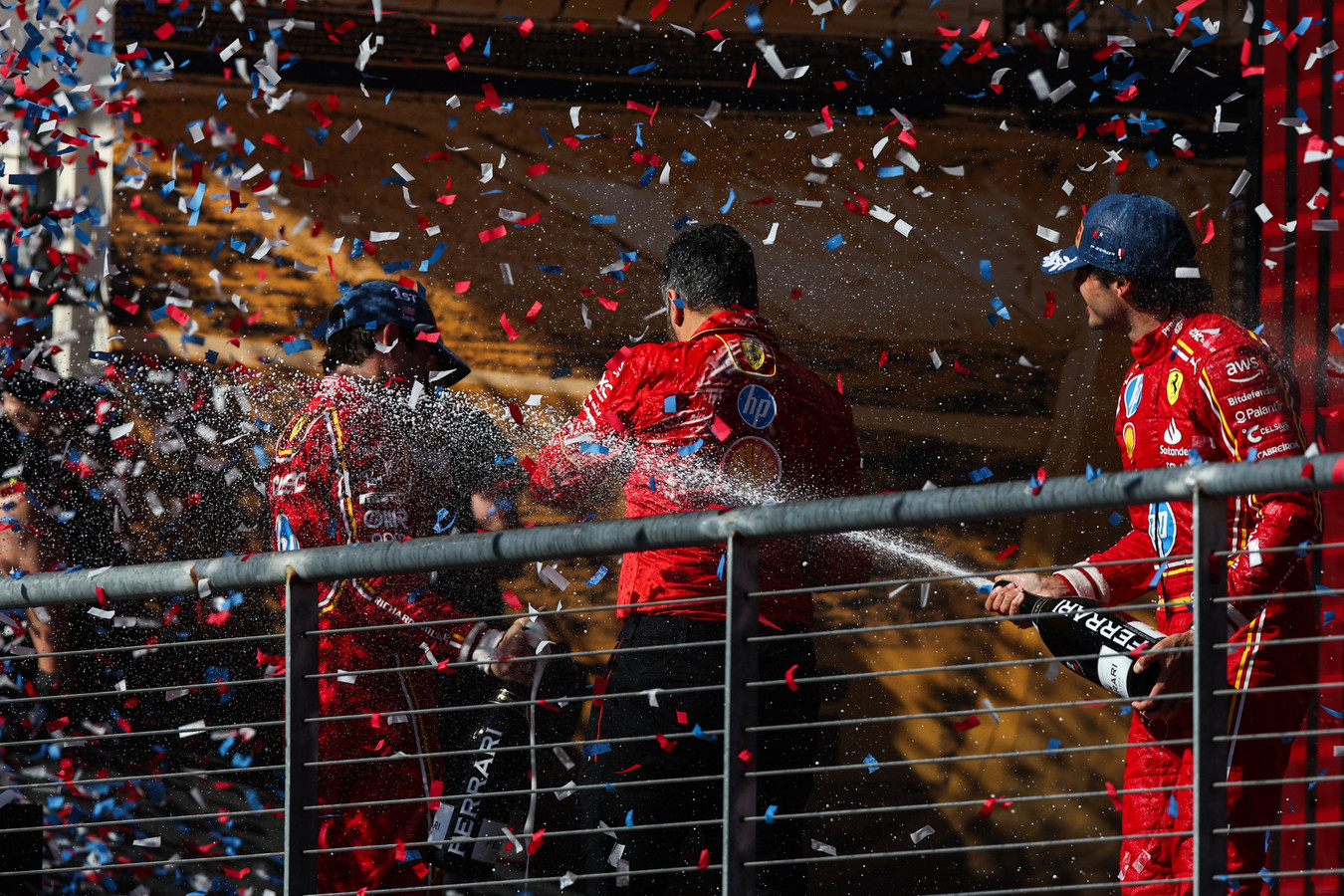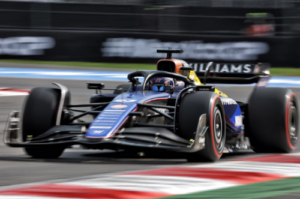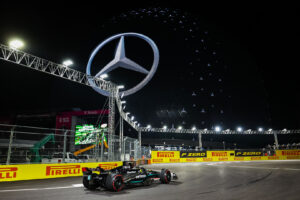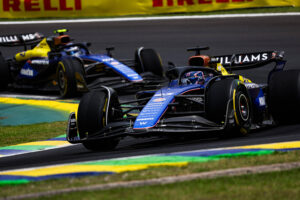How Ferrari’s upgrades pass the first major litmus test
Heading into the 2024 United States Grand Prix weekend at Austin, eight teams introduced upgrades to their cars. It was no stranger to see this feat, with a four-week break preceding F1’s trip to Austin. Only two teams didn’t bring any upgrades to the event: Williams and Ferrari.
Ferrari was instead looking to study the effectiveness of the front wing upgrade introduced back in Singapore. The team introduced minor tweaks to their front wing to incorporate a flexible component. This would provide the team more downforce into the corners, whilst maintaining the straight-line speed of the SF24. While Singapore, an anomaly on the F1 calendar, wouldn’t unlock any keys to its effectiveness, Ferrari was playing the long game. They knew Austin would be the first big test for their upgrades.
The Scuderia were triumphant only once around the Circuit of the Americas. This was back when Kimi Räikkönen took his final F1 win back in 2018. This configuration of circuit continually exposed the weakness of the Scuderia cars around the medium and high-speed corners over the years.
However, it was a splendid turnaround for Ferrari, with Charles Leclerc and Carlos Sainz finishing a dominant 1-2 this time. The Scuderia were class of the field, managing their tyres perfectly to execute a flawless race.
Ferrari’s upward trajectory in the second half of 2024
Heading into their home event at Monza, Ferrari team principal Fred Vasseur wore an optimistic outlook. He believed Ferrari could maximise their points haul around the next three events expected to suit the SF24’s characteristics. In addition, the Scuderia bolstered their package by introducing plenty of upgrades.
These included a revised floor, with the team attempting to cure the bouncing problem faced at earlier venues. The problem resurfaced after the team introduced an updated floor at the Spanish Grand Prix in June. Other updates included tweaks to the front and rear wings, a revised suspension and sidepod design, and diffusers. These were introduced in a bid to remain in sync with the updated bodywork.
While the upgrades appeared to bear fruit, as Leclerc triumphed at Monza and contended for victory at Baku, Ferrari had one further trick up their sleeve. A minor front-wing tweak appeared on the cars in Singapore. This tweak incorporated the element of moving parts onto the front wing, similar to that of McLaren’s much-debated rear wing at Baku.
Ferrari knew Singapore wouldn’t paint the full picture. Therefore, they instead focused their attention on the US Grand Prix in Austin. A track where the Scuderia had traditionally fared worse, it would be the perfect location to analyse if Ferrari’s upgrade was effective.
How Ferrari turned around their Austin fortunes into dominance
Austin has traditionally not been a Ferrari stronghold. The team from Maranello have suffered a perennial weakness in the long-radius corners. With previous Ferrari cars often suited to the straights and slow corners, the team used to suffer from excessive tyre wear and display a slower turn of pace into the medium and high-speed corners.
This was also on display during the 2023 United States Grand Prix, when Ferrari displayed a slower turn of pace than their competitors. While Leclerc started the race from pole, he was forced to attempt a one-stop strategy due to the lack of pace in comparison to those on tw0-stoppers. He eventually finished sixth, before being disqualified for excessive plank wear.
His teammate Sainz initially finished fourth, before being elevated to third after Lewis Hamilton’s disqualification for the same reason Leclerc was disqualified. The lead Ferrari was the slowest of the four contenders, with the Red Bull, Mercedes, and McLaren contenders all finishing ahead.
In 2024, it has been a different case for Ferrari at COTA.
While Free Practice and Sprint Qualifying were precursors, it was in the Sprint where the Ferrari pace was visible. With Leclerc and Sainz starting third and fifth, they were in the hunt for victory. The two Ferraris were extremely quick on the medium tyres, as they dispatched of George Russell with ease. Sainz managed to get the better of Norris on the final lap, while Leclerc just missed out on third in the sprint.
The signs from the short 19-lap sprint were of the Ferrari duo being the quickest in the medium-speed corners. This was easily visible in their confidence in the section between turns 12 and 15. Both drivers were able to take a tighter line into turn 15 when overtaking. They consistently maintained speed into the sweeping right-hander of turns 16, 17, and 18.
Ferrari’s Austin race day pace bodes well for Mexico and Brazil
Both Leclerc and Sainz were able to set consistent fastest laps and sector times on race day this past Sunday. This proved their pace was no fluke. While Leclerc placed his car well into turn one and took advantage of Verstappen and Norris squabbling to take the lead, he set consistent fastest laps to open up a ten-second lead on the medium tyres. This was despite an early safety car period, the first in ten races.
Sainz was also able to easily undercut Verstappen at the first round of pit stops, making it a Ferrari 1-2. As for Leclerc, his consistent pace in the first stint allowed for a more measured second stint. According to data, the Ferraris were the quickest cars in the medium-speed corners. The revised front wing design allowed for greater cornering and stability of the SF24, instilling more confidence in both drivers.
The revised floor and the front wing update were key to their dominant performance around the Circuit of the Americas. This bodes extremely well for the upcoming rounds in Mexico City and Interlagos too.
The Mexico track features one of the longest straights on the calendar. Yet, teams have to run a high-downforce set-up due to the thin air at high altitude. The Mexico City circuit also features a sprinkling of medium and high-speed corners, allowing Ferrari to potentially contend for the win this weekend as well.
Interlagos too features a series of medium and high speed corners. As such, maintaining tyre grip is difficult around a circuit of winding, long-radius corners. Ferrari’s pace last year saw them lose out to the likes of Red Bull, McLaren, as well as Aston Martin around the Brazilian circuit.
However, with their improved pace in the medium-speed corners and the SF24 easier on the tyres, you could once again expect Ferrari to be in contention for victory around Interlagos. It’s almost as if it’s all adding up at the right time, as the Austin points haul lifted Ferrari back into championship contention once again, a compelling battle heading into the final five rounds of 2024.






